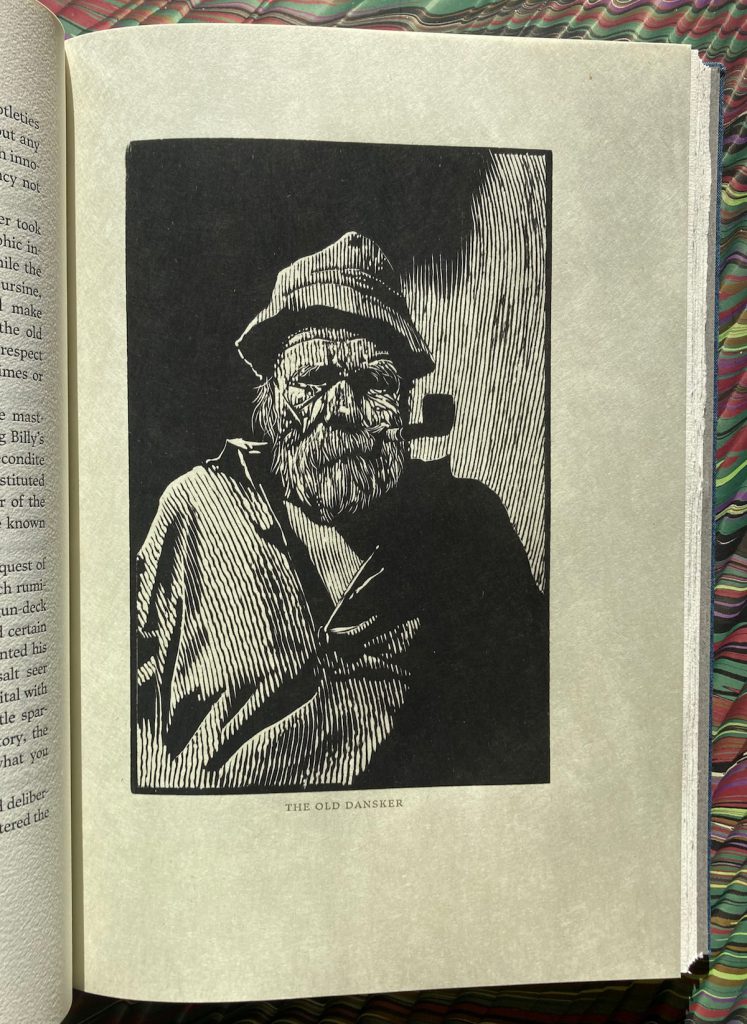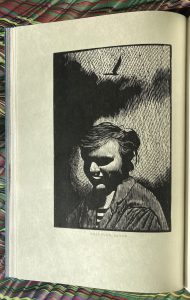Category: Henry Wessells
dust jackets and scientific romance
At Readercon in mid-July, the great delight was the panel / conversation with John Clute about dust jackets and the information they encode (in and out of science fiction), with examples from The Book Blinders (2024), my own collection, and the Clute Library at the Telluride Institute [click on things to see bigger pictures].
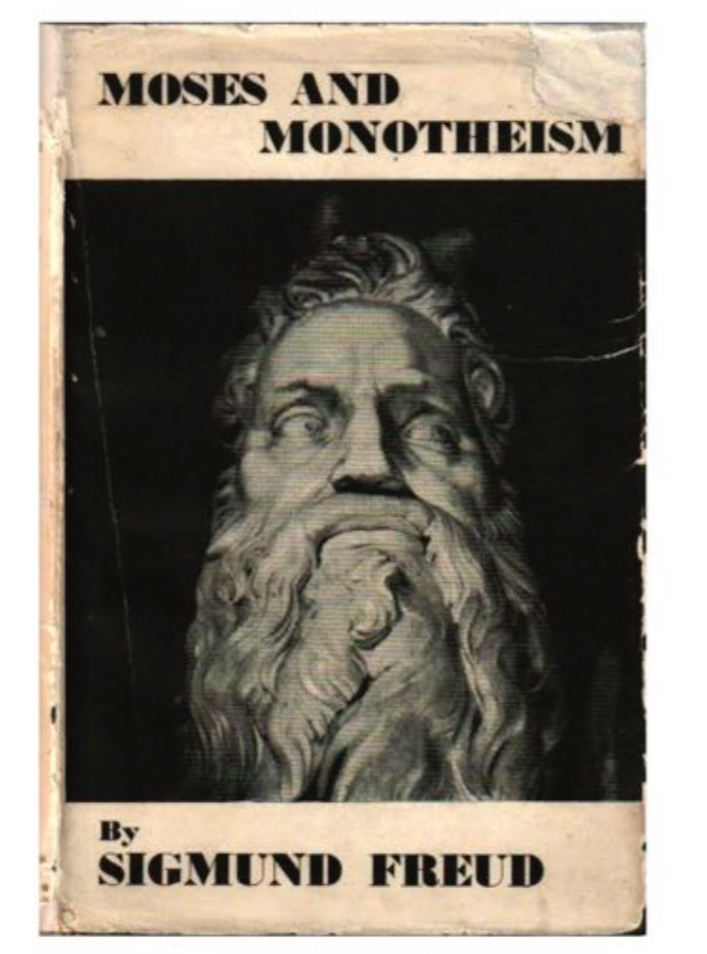
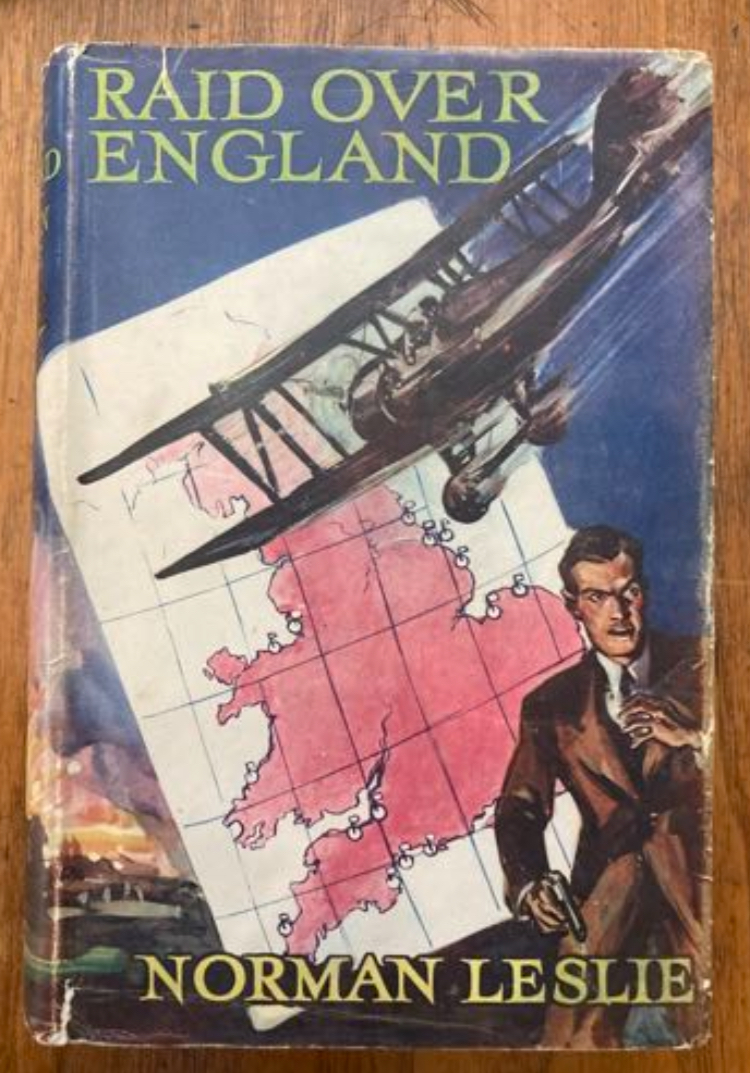
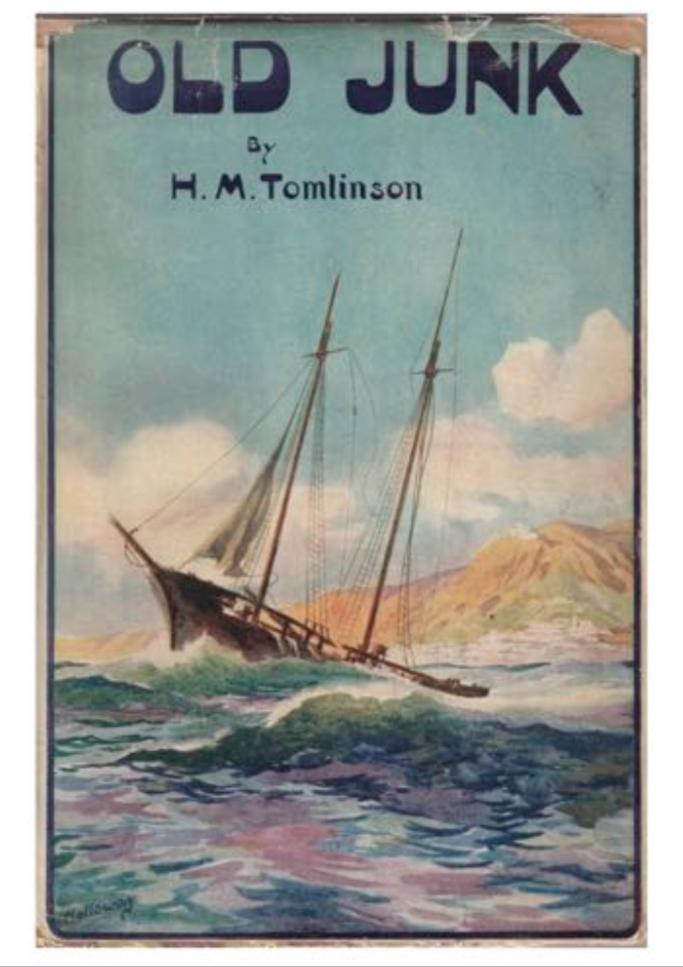
Clute also talked about the Scientific Romance in interwar British publishing, with Michael Dirda, a good chat. His thesis in progress is outlined at the SFE, lots of interesting titles (most of them in the Telluride hoard), details here :
https://sf-encyclopedia.com/entry/scientific_romance
![The World Ends by William Lamb [Storm Jameson] (dust jacket from the Clute collection, Telluride)](https://endlessbookshelf.net/wordpress/wp-content/uploads/2025/08/IMG_2042.jpeg)
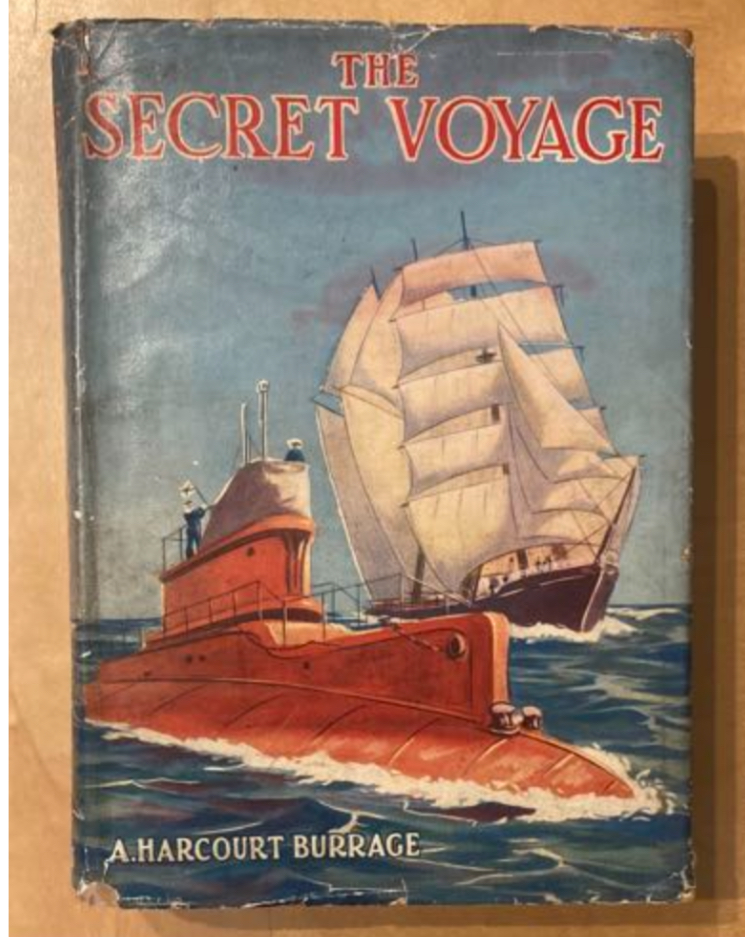
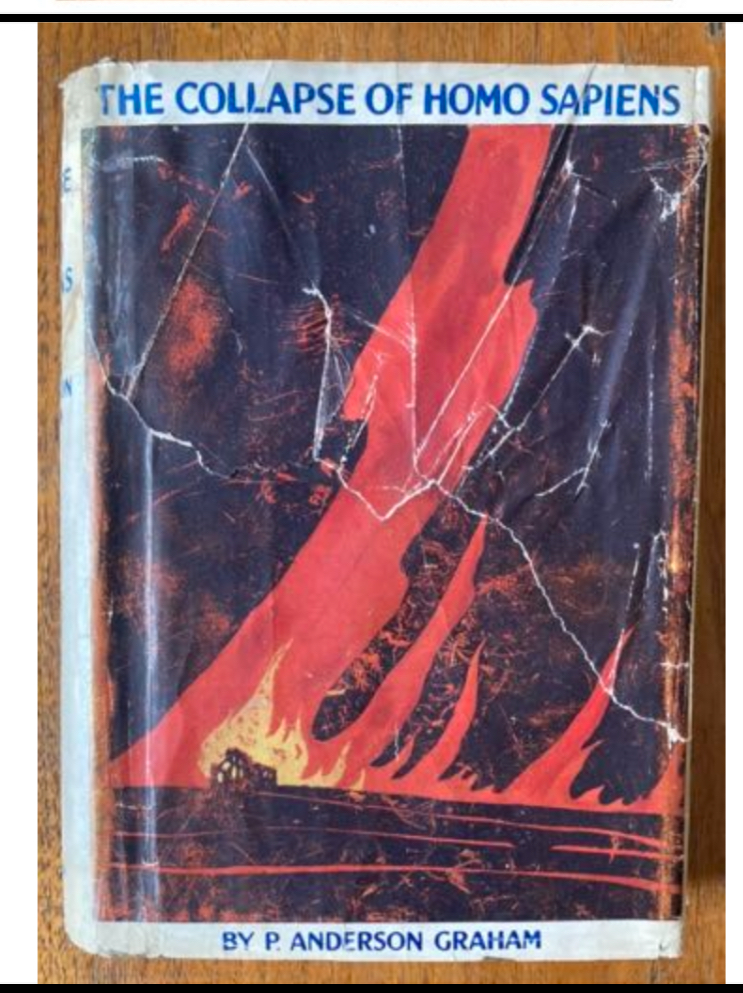
Readercon 34 (July 2025)
Readercon 34 Schedule
at the Boston Marriott Burlington in Burlington, Mass.
https://readercon.org
Saturday 19 July
10:00 a.m., at the autographer’s table
Autograph Session : Henry Wessells
Sunday 20 July
10:00 to 11:00 a.m., in : Create / Collaborate
The Art of the SF Book Cover
John Clute & Henry Wessells
Panel description : Since its inception, the British Library, the national library of the UK, has stripped dust jackets off books in its holding and discarded the unwanted wrappers, losing an essential piece of their cultural and artistic significance. In The Book Blinders, science fiction historian and theorist John Clute details the “annals of vandalism” at the British Library, with a focus on works lost (and found). John Clute and antiquarian bookseller Henry Wessells give a joint presentation on this subject, with numerous illustrations, and with extra time for Q&A.
11:00 to 11:30 a.m., in : Empower / Embrace
Reading : Henry Wessells
Henry Wessells reads from The Elfland Prepositions and from Another Green World (both newly published in 2025).
12:00 noon to 1:00 p.m., in : Create / Collaborate
The Art of the SF Book Cover
John Clute & Michael Dirda
Panel description : The early divergence of American and British science fiction may best be witnessed in the works of UK authors in the 1930s and ’40s that have been called “scientific romances.” Unlike their pulp cousins in the US, these works lack the optimistic outlook of young square-jawed heroes out to conquer the galaxy. Instead, they offer anxiety about rogue scientists armed with Ultimate Weapons out to blackmail the world to either peace or servitude. In this presentation, famed fantastika theorist John Clute and Michael Dirda will discuss this less-recognized strand of SF.
[N.B. I will be running a slide show not dissimilar to the one for dust jackets.]
I should arrive at Readercon by midday on Friday. Temporary Culture will have a table in the book room on Friday and Saturday, and copies of A Conversation larger than the Universe, The Private Life of Books, The Elfland Prepositions, and Another Green World (advance copies of the Zagava paperback), the publications of the Avram Davidson Society, Sexual Stealing by Wendy Walker, and a variety of other books will be available for sale (cash, cheque, or paypal). If you see me, come say hello. There is always plenty of time for conversation.
Another green world by Henry Wessells, 2025

— Henry Wessells. Another green world. Zagava, 2025. Paperback issue. Pp. 180, [2, blank], [2, imprint]. Sage green wrappers printed in black, lower wrapper with blurbs by Guy Davenport, William Gibson, and Joanne McNeil.
On a very hot evening in late June, your correspondent went to Newark airport to expedite customs clearance and collect the first author copies of Another green world, newly re-issued by Zagava Books with two additional stories. It is a stylish book in a tall narrow format, set by Jan-Marco Schmitz in Minion pro with titles in Roadway.
The paperback is a pleasure to hold and read. The hardcover issue is in production, and a formal announcement of publication is expected. Zagava make nice books. Perhaps you will agree.
The table of contents is as follows (with note of the story‘s first publication) :
- From This Swamp. (The Starry Wisdom. A Tribute to H. P. Lovecraft. Ed. D. M. Mitchell. Creation Books, 1994)
- Book Becoming Power. (NYRSF, March 2000)
- Another Green World. (Nature, 15 June 2000)
- The Polynesian History of the Kerguélen Islands. (Exquisite Corpse 45 & 47, 1994)
- The Institute of Antarctic Archaeology & Protolinguistics. (Another green world, 2003)
- Appraisal at Edgewood (A Critical Fiction). (NYRSF, March 2001)
- Hugh O’Neill’s Goose. (Interzone, October 2001)
- Virtual Wisdom. (Exquisite Corpse 36, 1992)
- Wulkderk; or, Not in Skeat. (Lady Churchill’s Rosebud Wristlet 32, 2015, as “The Beast Unknown to Heraldry”)
- Extended Range; or, The Accession Label. (2015, Lady Churchill’s Rosebud Wristlet 35, 2016)
- Ten Bears; or, A Journey to the Weterings (A Critical Fiction). (NYRSF, October 2003)
Of the first edition, Guy Davenport wrote,
“If you don’t believe in magic, read Henry Wessells and find out how wrong you are.”
Joanne McNeil (author of Lurking and Wrong Way), writes, “Henry Wessells writes from beyond an ‘unfamiliar void’, where the natural world, dreams, language, myths, research, and rituals converge. The stories collected in Another Green World offer uncanny vitality out of the dark like dandelions sprouting from cracked New Jersey pavement. A delightful and enduring work of literary inquiry.”
The Elfland Prepositions by Henry Wessells
— Henry Wessells. The Elfland Prepositions. Temporary Culture, 2025.
Printed on Mohawk superfine white eggshell. Pictorial wrappers. 26 copies, lettered A to Z, were reserved for presentation ; there were also 100 copies numbered 1 to 100. Edition of 326 copies.
Collection of four previously unpublished short stories :
Cleaning up Elfland
The Barmaid from Elfland
John Z. Delorean, Dry Cleaner to the Queen of Elfland
A Detective in Elfland
Published 27 February 2025. Click on link or photo to order.
ISBN13 978-0-9961359-0-0 ISBN 0-9961359-0-1
Elfland is not a nice place, but it’s important to know how it works.
— — —
“elegant” — MICHAEL DIRDA, in the Washington Post
“Here is an Elfland as implacable as ever, but now ruthlessly enmeshed in contemporary mortal affairs.” — MARK VALENTINE
“very clever, beautifully dark in implication. [. . .] Wessells is not prolific at all (in fiction) but what he does is outstanding.” — RICH HORTON
”If you don’t believe in magic, read Henry Wessells and find out how wrong you are.” — GUY DAVENPORT
commonplace book : february 2025
The Elfland Prepositions, published 27 February
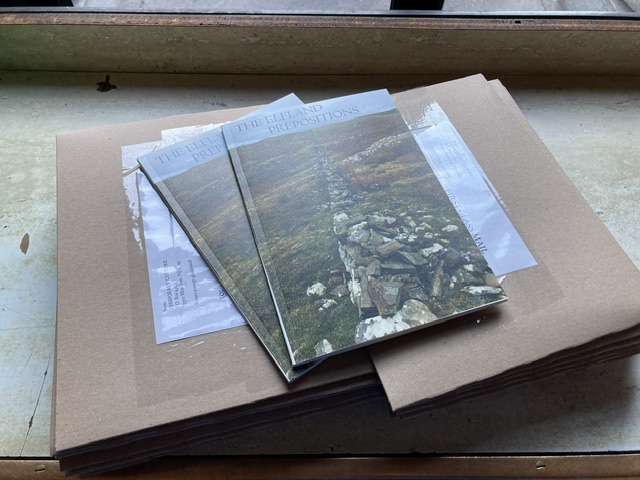
advance presentation copies, at the post office ready for mailing [26 February]
—
in production

— Henry Wessells. The Elfland Prepositions. Temporary Culture, 2025.
Printed on Mohawk superfine white eggshell. Pictorial wrappers. 26 copies, lettered A to Z, were reserved for presentation ; there were also 100 copies numbered 1 to 100.
Proof copy above (received 12 February 2025) ; proofs corrected & in production (14 February 2025), published 27 February 2025.
Copies now offered for sale, click on link or photo to order.
ISBN13 978-0-9764660-0-0 ISBN 0-9764660-0-1
Collection of four previously unpublished short stories.
Elfland is not a nice place, but it’s important to know how it works.
— — —
seen in the imagination, and at the Grolier Club :
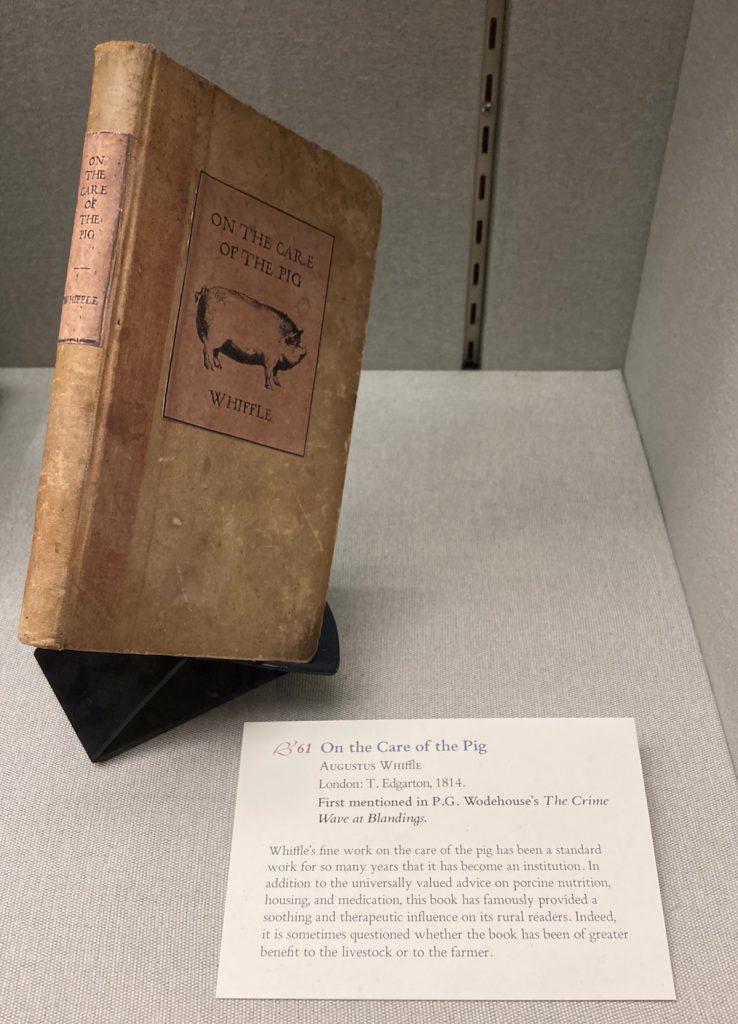
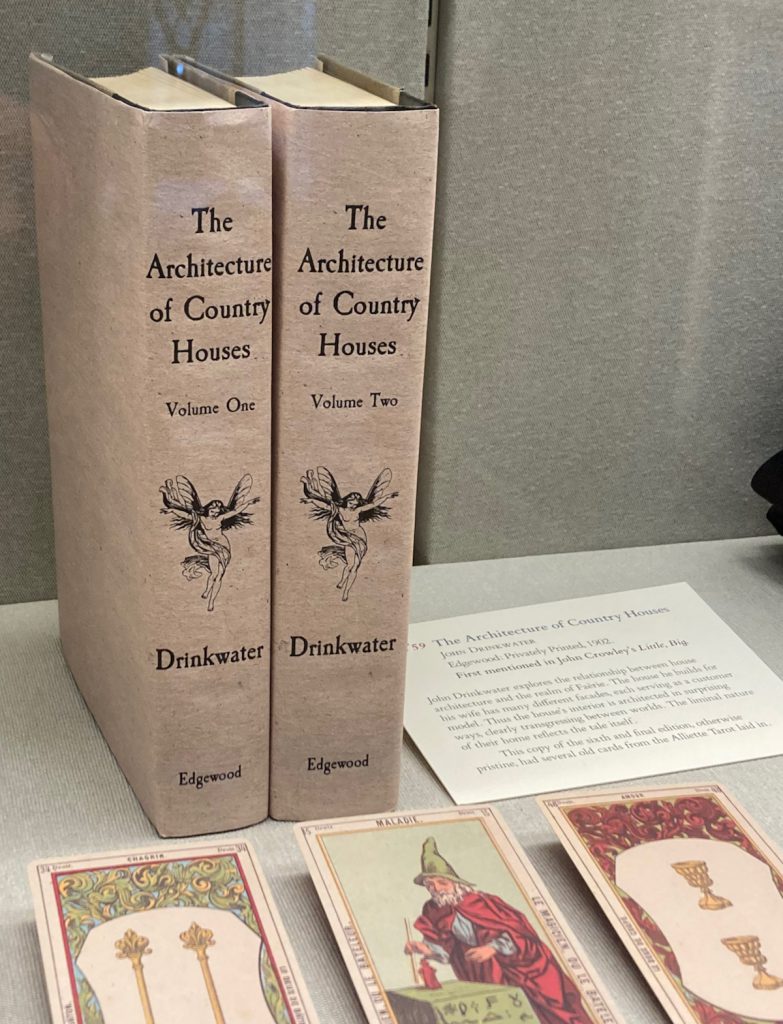
two entries from the recent Grolier Club exhibition, Imaginary Books. Lost, Unfinished, and Fictive Works Found Only in Other Books, from the collection of Reid Byers.
— — —
current reading
— Charles Robert Maturin. Melmoth the Wanderer: A Tale [1820]. With introduction and notes by Victor Sage. Penguin Books, [2000].
/ into the labyrinth, again
— — —
recent reading
— Len Deighton. Hope. HarperCollins, [1995].
— — Charity. HarperCollins, [1996].
— — Winter. A Novel of a Berlin Family. Knopf, 1987.
Germany in the world, 1899-1945 ; back story or bedrock for the Bernard Samson novels.
— — —
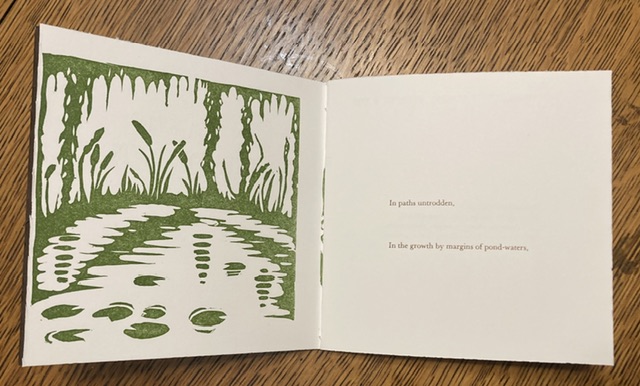
‘away from the clank of the world’
— Walt Whitman. In Paths Untrodden. Printed in brown ink, blockprint illustrations in green and blue. [16] pp. [The Letterpress at Oberlin, January 2025]. Edition of 217.
Calamus 1, from the 1860 Leaves of Grass, with blue herons and green marsh plants. [Gift of VH].
— — —
Hard Rain
by Janwillem van de Wetering
A short note now up (in English) on the excellent and informative Dutch site
https://janwillemvandewetering.nl/favoriete-boek/
— — —
“not relics of the past, but pockets of the future arriving ahead of schedule”
— Christopher Brown, over at The Clearing (the blog of Little Toller Books)
— — —
“When I look at that obscure but gorgeous prose-composition, the Urn-burial, I seem to myself to look into a deep abyss, at the bottom of which are hid pearls and rich treasure ; or it is like a stately labyrinth of doubt and withering speculation, and I would invoke the spirit of the author to lead me through it.”
— Charles Lamb on Sir Thomas Browne, quoted by Hazlitt, in “Of Persons One Would Wish to Have Seen” (1826)
— — —
commonplace book : january 2025
31 January 2025
in today’s mail
— Conjunctions 83. Revenants : The Ghost Issue. Edited by Bradford Morrow and Joyce Carol Oates. Bard College, 2024.
a big issue, with “An Incident in Monte Carlo”, a fragment or outtake from the forthcoming Wreckage by Peter Straub, new work by Elizabeth Hand, James Morrow, Timothy J. Jarvis, Mark Valentine, Reggie Oliver, and many others.
“Fern’s Room” by Liz Hand is pitch perfect, deftly moving from a gentle rom-com American anglophile country house idyll to a very dark endgame, with clues scattered all along the way.
“Plunged in the Years” by Jeffrey Ford, with a few steps off the path in the woods, gets right to the heart of the American ghost story : time and memory (and childhood).
— — —
recent reading
— Len Deighton. Faith [1994]. Grove Press, [2024].
— Margery Allingham. Sweet Danger [1933]. Penguin Books, [1963].
— Nathan Ballingrud. Crypt of the Moon Spider. Nightfire, [2024].
— Avram Davidson. The Adventures of Doctor Eszterhazy. Owlswick Press, 1990.
— — —
books wait for their readers
All antiquarian booksellers have a shelf of what Bill Reese called ‘intractables’ : things that sit on a shelf and seem unsaleable, or just beyond the grasp of one’s understanding, or, indeed, actively resist the efforts of the cataloguer with what M. R. James called the ‘malice of inanimate objects’. And then, suddenly, one finds a new perspective, or works with someone who has the key, and the door unlocks. I am fortunate to have experienced this a few times in my career. To watch this phenomenon in real time is one of the delights of the profession.
The question of whether or not books wait for their writers is trickier to answer. This is a questionof a different order. I would say yes, on balance, but one feels the clock ticking, and the list of books not written is very long.

— — —
‘to escape the straitjacket that had been science fiction’ — Paul Kincaid
an excellent essay by a clear-eyed critic ringing the changes on Harlan Ellison’s Dangerous Visions anthologies then and now :
http://strangehorizons.com/non-fiction/who-is-in-danger/
— — —
Eighteen Years of the Endless Bookshelf
Last week marked eighteen years of ‘simply messing around in books’ and reporting the pleasures on this website. It is still fun and so I will continue to note interesting books, curious passages, announcements, occasional snapshots, and digressions.
— — —
an Endless Bookshelf quiz
Who is the Widmerpool ?
— from your year(s) at school or university
— of your chosen field or profession
— observed recurringly elsewhere
/ wrong answers accepted
/ bonus points for naming your favorite book in ‘A Dance to the Music of Time’
— — —
4 January 2025
early in January, and it is already a good year in books, having just received two long-awaited titles in this week’s mailbag
Billy Budd at 100 (continued)
— Herman Melville. Billy Budd. A Centennial Edition with Fourteen Illustrations Cut in Wood by Barry Moser. Pennyroyal Press, 2024. Edition of 50 copies signed by the artist.
A spectacular new large format edition of Billy Budd Sailor (An Inside Narrative) — as the half-title names the book. The text of the novella is set from the Melville Electronic Library, with original woodcuts by American master Barry Moser.
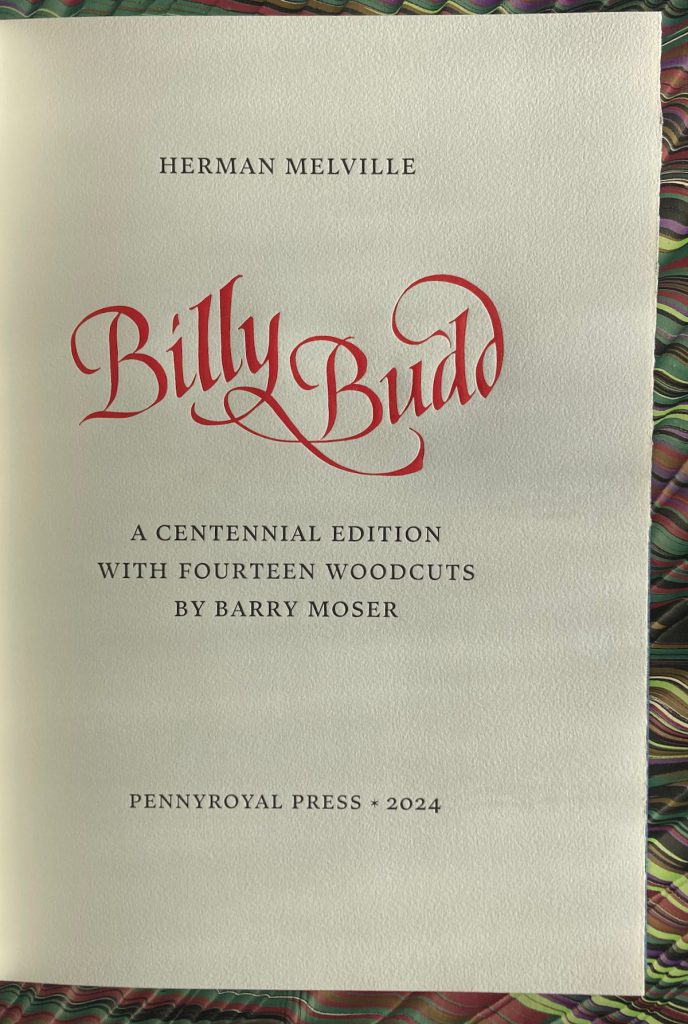
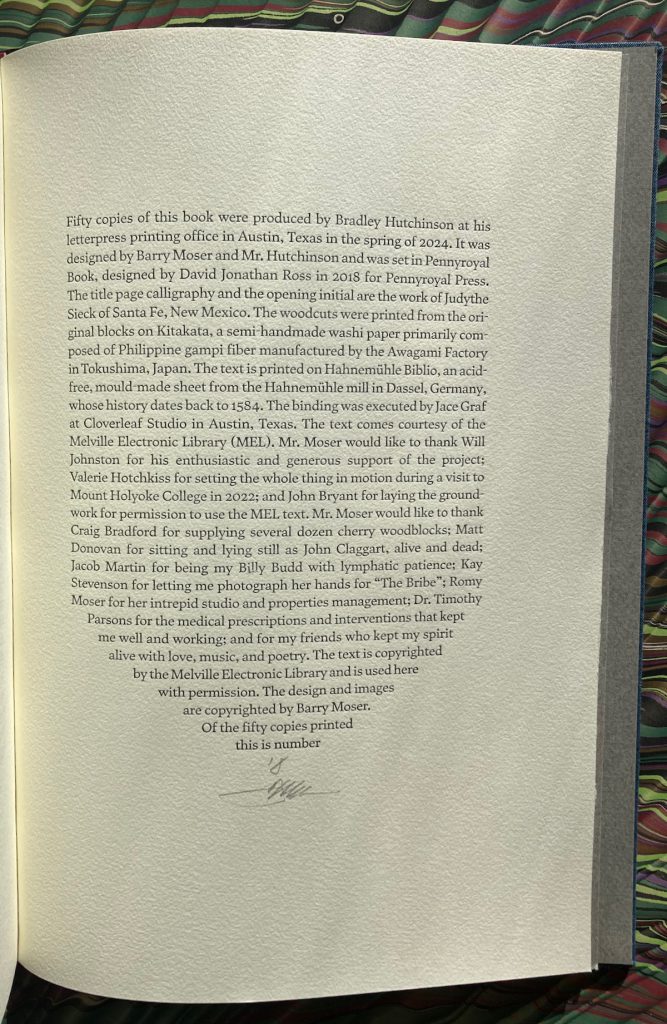
— — —
a Tim Young trifecta

— Timothy Young. Isness & Aboutness. Thoughts on Bibliography. Publication Studio, 2024.
With two single sheet ’zines, printed rectos only :
— 10 Reasons Libraries Matter, 2021.
— 10 Reasons Books Matter, [2015].
Isness & Aboutness is a really great essay on thinking about books and thinking about the world (it is the text of Tim’s Sandars lecture at Cambridge University in November). He cites Donald McKenzie to good effect, on bibliography as
the only discipline which has consistently studied the composition, formal design, and transmission of texts by writers, printers, and publishers; their distribution through different communities by wholesalers, retailers, and teachers; their collection and classification by librarians; their meaning for, and — I must add — their creative regeneration by, readers [. . .] no part of that series of human and institutional interactions is alien to bibliography
His essay moves beyond McKenzie’s assertion to identify new modes of bibliography and to assert the primacy of bibliography as a means of uncovering what books are and what they do in the world. Highly recommended.
— — —

snow day, 11 January 2025
— — —
great blue heron flying low over the silvered mere
alighting on the ice beside a stand of reeds
in the distance, the pulaski skyway
/ from the train window this morning [16 January]
/ file under : extreme commute
— — —
Another green world by Henry Wessells
Zagava Books will be publishing Another Green World, a collection of short fiction expanded from the 2003 work with the same title and adding two previously uncollected stories. The book will be available in two states, a narrow format paperback and a numbered hardcover. Another Green World is in production for late spring 2025 and can be pre-ordered here :
https://zagava.de/shop/another-green-world
The table of contents includes the following stories :
- From This Swamp (1,800 words)
- Book Becoming Power (2,200 words)
- Another Green World (800 words)
- The Polynesian History of the Kerguélen Islands (3,300 words)
- The Institute of Antarctic Archaeology & Protolinguistics (3,600 words)
- Appraisal at Edgewood (2,000 words)
- Hugh O’Neill’s Goose (3,800 words)
- Virtual Wisdom (900 words)
- Wulkderk; or, Not in Skeat (1,750 words)
- Extended Range; or, The Accession Label (2,000 words)
- Ten Bears (8,400 words)
Of the first edition, Guy Davenport wrote,
“If you don’t believe in magic, read Henry Wessells and find out how wrong you are.”
Mark Valentine writes : “Henry Wessells delights in books and mysteries and writes with a zest for the arcane and a talent for the oblique and surprising.”
Zagava produce beautiful books and I am delighted to join the ranks of their authors.
A Melville Census. John Marr & Timoleon
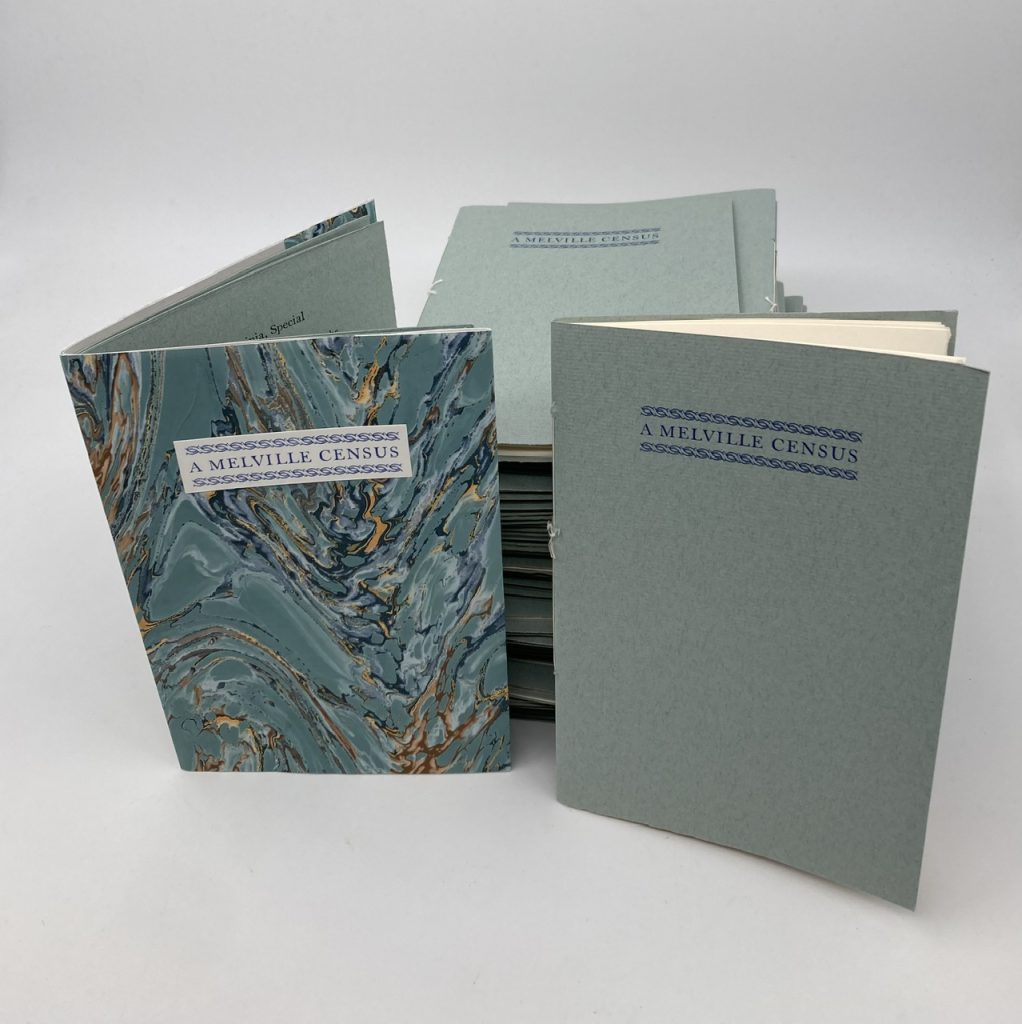
A Melville Census. John Marr & Timoleon. With a note by Henry Wessells.
Edition of 52 copies, designed and printed by hand by Jerry Kelly.
Published 8 January 2025. Sold out (updated 6 March 2025).
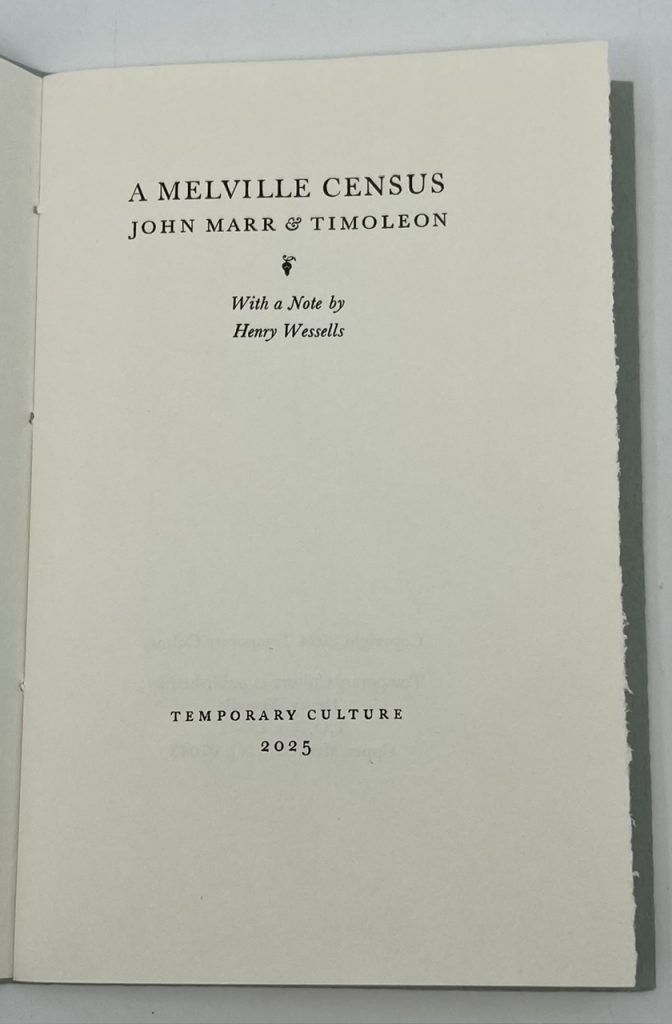
This is just what it sounds like : a report on the location of all known copies of Herman Melville’s John Marr (1888) and Timoleon (1891), the two last books of poems (each printed in editions of 25 copies), with a note about Maurice Sendak, Bill Reese, and others. Of the 52 copies printed, 26 lettered copies were reserved for presentation (one copy for the author, printed on blue paper, can be glimpsed at left above). Bibliographical details here.
Moby-Dick and American Literature of the Fantastic ; or, Bound for the South Seas
Moby-Dick and American Literature of the Fantastic ; or, Bound for the South Seas
Prologue
This is a crackpot theory with a kernel of truth. It requires some minimal familiarity with the works of H. P. Lovecraft and Herman Melville. It took shape as I re-read Moby-Dick for the first time in decades in January 2016, and I expounded it at the California Antiquarian Book Fair in February 2016, to my friend Bill Reese, a supreme Melville collector and the greatest Americana dealer of his generation. Great reader though Bill was, he had never read any H. P. Lovecraft and so he greeted my geste with a glazed look that means, as any performer will attest, you have lost your audience. On another occasion, an eminent Melville scholar responded with a Jupiterian frostiness. So you have been warned. I performed early versions of it with impromptu embellishments a few times in the interim in bar-rooms and one evening on the patio at Readercon in Quincy, Mass., for Jim Morrow and a few others, in July 2017. This final text was read at Readercon in July 2023. As you will see later, it is necessary to give this chronology.
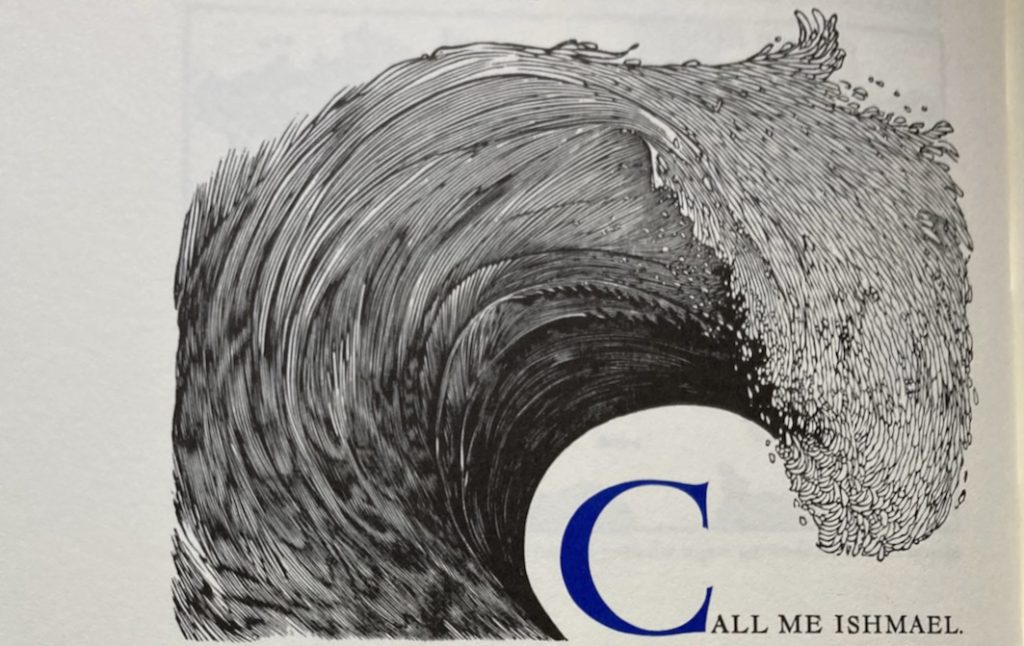
[All citations from Moby-Dick are to the University of California paperback with the illustrations from the Barry Moser Arion Press edition.]
Moby-Dick and American Literature of the Fantastic ; or, Bound for the South Seas
Ernest Hemingway was only half-right : American literature springs from one book, but that book is Moby-Dick (1851).
I
Melville gives for the first time voices to the voiceless, to those who had heretofore been mere furniture of narrative. It is Tashtego, the “unmixed Indian from Gay Head, the most westerly promontory of Martha’s Vineyard” (122), who first names the object of the Pequod’s quest :
“Captain Ahab,” said Tashtego, “that white whale must be the same that some call Moby Dick.” (166)
The cabin boy Pip dances at midnight in the forecastle until a squall arrives and the “jollies” are sent aloft to reef the topsails. “It’s worse than being in the whirled woods, the last day of the year! Who’d go climbing after chestnuts now? But there they go, all cursing, and here I don’t.” (179)
Stubbs berates the elderly Fleece for overcooking his whale-steak and bids him preach to the sharks worrying the carcass alongside the ship. Fleece concludes with a mutter, “I’m bressed if he aint more shark than Massa Shark himself.” (306)
II
Moby-Dick also marks the point where English poetry becomes American literature. To take three examples, here is Samuel Taylor Coleridge’s “Rime of the Ancyent Marinere” transformed :
An intense copper calm, like a universal yellow lotus, was more and more unfolding its noiseless measureless leaves upon the sea. (320)
Melville had earlier named Coleridge and the albatross to assert Nature’s precedence over the English poet. (191)
Chapter 93, the episode of Pip’s loss overboard, takes its title from William Cowper’s poem of madness, “The Cast-away”, and its substance from these verses : “We perish’d, each alone: / But I beneath a rougher sea, / And whelm’d in deeper gulfs than he.”
By the merest chance the ship itself at last rescued him [. . .] Not drowned entirely, though. Rather carried down alive to wondrous depths, where strange shapes of the unwarped primal world glided to and fro before his passive eyes; and the miser-merman, Wisdom, revealed his hoarded heaps; and among the joyous, heartless, ever-juvenile eternities, Pip saw the multitudinous, God-omnipresent, coral insects, that out of the firmament of waters heaved the colossal orbs. (424)
And, of course, it is the “Sea-change / Into Something Rich and Strange” from Ariel’s song in The Tempest, that echoes in Ahab’s words :
This is a pine tree. My father, in old Tolland county, cut down a pine tree once, and found a silver ring in it [. . .] when they come to fish up this old mast, and find a doubloon lodged in it, with bedded oysters for the shaggy bark. Oh, the gold! (445)
So far so good, nothing extraordinary or particularly new about these citations. They are excellent passages. Moby-Dick is also a great and influential novel of cosmic horror.
III
To go ahead for a moment. The revival of interest in Melville during the 1920s is well documented, including a standard edition of his works, and the discovery of the manuscript of Billy Budd (first published in 1924). In France, Jean Giono read Melville and began a translation of Moby-Dick into French, eventually issued in 1939. When the translation was to be reprinted by Gallimard, Giono declined to write the biography his publishers wanted and instead produced a remarkable fantasia, Pour saluer Melville (Paris: Gallimard, 1941). It is a fictional interlude during Melville’s visit to England in 1849 that bears directly upon the impulse leading Melville to write Moby-Dick. Giono evokes a continual struggle within Melville :
Depuis quinze mois qu’il est dans le large des eaux, il se bat avec l’ange. Il est dans une grande nuit de Jacob et l’aube ne vient pas. Des ailes terriblement dures le frappent, le soulèvent au-dessus du monde, le précipitent, le resaisissent et l’étouffent. Il n’a pas cessé un seul instant d’être obligé à la bataille [. . .] s’il saute dans la balinière, s’il chevauche des orages de fer [. . .] il se bat avec l’ange. (38)
Melville’s unceasing fight with the angel, in the momentous night of Jacob where dawn does not come, is Ahab’s struggle. Ahab can recall the domestic joys and tenderness of fatherhood, but once the Pequod sails he is intent and unwavering in his quest of the supramundane real, that which is beyond the barrier. He tells Starbuck :
All visible objects, man, are but as pasteboard masks. But in each event — in the living act, the undoubted deed — there, some unknown but still reasoning thing puts forth the mouldings of its features from behind the unreasoning mask. If man will strike, strike through the mask! How can the prisoner reach outside except by striking through the wall? To me, the white whale is that wall, shoved near to me. Sometimes I think there’s naught beyond. But ’tis enough. (168).
And elsewhere :
How dost thou know that some entire, living, thinking thing may not be invisibly and uninterpenetratingly standing precisely where thou now standest; and standing there in thy spite? (480-1).
IV
H. P. Lovecraft (1890-1937) was a native-born Rhode Islander, a cosmic materialist by philosophical inclination, and a writer of fantastic fiction. He lived for some years in exile in New York City. In August 1925, Lovecraft wrote down the plot outline for a story based on a dream from years before, and recasting an earlier tale.
In early 1925 Lovecraft dwelt in an apartment house in Brooklyn, and a neighbor was George W. Kirk, whom he had known since 1922. Kirk was a bookseller who later owned the Chelsea Book Shop on West 8th street in Manhattan. Sometime in the middle 1920s, Kirk gave a copy of Moby-Dick to Lovecraft, who recorded the gift on the book’s fly leaf, and signed his name: H. P. Lovecraft, Esq., Providence, Rhode-Island.
I have examined that copy at the American Antiquarian Society. It has Lovecraft’s fine fanlight window bookplate and bears a pencil accession note on the pastedown: Purchase S. Clyde King, Jr. Aug 8 ’41. (Lovecraft’s Library was dispersed after his death; King was a Providence bookseller). Moby-Dick was rediscovered at A.A.S. in November 2017 (note that date) during a shelf read in the stacks. The book is otherwise unmarked. And yet, and yet.
“Let the owners stand on Nantucket beach and outyell the Typhoons.” (483). In this passage from chapter 109 of Moby-Dick, I hear the origins of a phrase in a later story of Lovecraft’s describing terrible events in rural Massachusetts, “The Dunwich Horror” (written 1928 and published 1929): “some day yew folks’ll hear a child o’ Lavinny’s a-calling its father’s name on the top of Sentinel Hill” (in Tales. New York: Library of America, 2005, page 375).
The horror in question is one of a pair of twins conceived by Lavinia Whateley in congress with Yog-Sothoth, an interdimensional being. Wilbur Whateley, uncouth and stinking, took after his human parent. The other twin did not.
After his return to Providence in April 1926, Lovecraft eventually completed the story he outlined a year earlier. “The Call of Cthulhu” was published in Weird Tales in early 1928. It is a globe-spanning tale of malign influences, primitive cults, and the resurgence of an ancient extraterrestrial being, Cthulhu (pronounced “khlul’-hloo”). In the subsequent decades, Cthulhu has stepped out of the pages of Lovecraft’s story and, like Mary Shelley’s monster, taken on a life of its own.
V
And so to the next step, the ambiguity of pronouns: “There she blows!” Invariably, throughout Moby-Dick. Elsewhere whales are “he”, grammatically male by default, as buttressed by Melville’s cetology and lore of the sperm whale fishery. And yet.
Moby-Dick is the intrusion of these terrible interdimensional forces into the ordinary. So ordinary cetology does not apply, and the white whale is a she-whale. In his last speech, Ahab proclaims, “Toward thee I roll [. . .] still chasing thee, though tied to thee, thou damned whale!” (574-5).
The fated rendez-vous is a hot date in the South Seas : Cthulhu is the spawn of Ahab and Moby-Dick.
Q.E.D.
Author’s Note:
I had written an early version of this essay in the summer of 2017; and then in December 2017, I learned that the American Antiquarian Society holds H. P. Lovecraft’s copy of Moby-Dick (an edition published in Boston after Melville’s death: the copyright notice is in his widow’s name).
Moby Dick or The White Whale / by Herman Melville author of “Typee,” “Omoo,” “White Jacket,” etc.
Boston : Dana Estes & Company publishers, [1892]. American Antiquarian Society copy has bookplate of H.P. Lovecraft. Inscribed: From George Willard Kirk, Esq. H.P. Lovecraft, Esq., Providence, Rhode-Island. Catalog Record #144128.
https://catalog.mwa.org/vwebv/holdingsInfo?bibId=144128
They wrote about the discovery:
14 November 2017
Fun fact: AAS has a copy of Moby Dick once owned by H. P. Lovecraft! A source of inspiration for him, perhaps?
Fun fact: AAS has a copy of Moby Dick once owned by H.P. Lovecraft! A source of inspiration for him, perhaps? https://t.co/EvvOFf98mk https://t.co/u0UqBHUJIZ
— American Antiquarian Society (@AmAntiquarian) November 14, 2017
It’s a nice-looking copy too! [with illustrations]
It's a nice-looking copy too! pic.twitter.com/yDbm4xeLmw
— American Antiquarian Society (@AmAntiquarian) November 14, 2017
Jean Giono. Pour saluer Melville. Paris: Gallimard, 1941. The passage cited above is from p. 38:
For the fifteen months since he has been at sea, he has been fighting with the angel. It is for him the momentous night of Jacob and the dawn does not come. Hard terrifying wings strike him, raise him above the world, tumble him, seize him again, and smother him. Not for a single instant has the struggle relinquished him. [. . .] when he jumps in the whale-boat, when he rides iron storms [. . .] he is fighting with the angel.
[This is my own translation; in the fall of 2017 (!) it was issued as a NYRB Classics paperback in an English translation by Paul Eprile.]
For George Kirk, see S. T. Joshi & D. E. Schultz, An HP Lovecraft Encyclopedia (Greenwood, 2001; Hippocampus Press, 2004), pp. 137-8.
Moby-Dick was not listed in the first two editions of S. T. Joshi, Lovecraft’s Library (Necronomicon Press, 1980; Hippocampus, 2002), but is recorded as item 651 in the fourth edition (Hippocampus, 2017), “Gift of George Kirk,” with citations to Lovecraft’s letters and essays.
[This essay was first published in Exacting Clam 12 (Spring 2024). All rights reserved]


